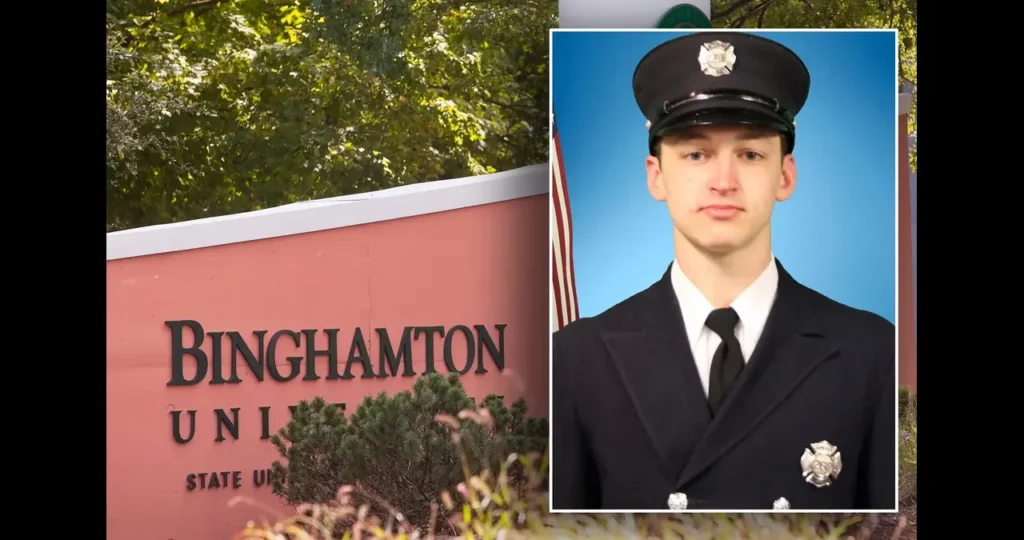Introduction to the Case
The tragic death of a student at Binghamton University has shaken the campus and surrounding community to its core. As news spread, questions arose about the circumstances leading to this heartbreaking event. College life presents challenges that can feel overwhelming for many students every year. Friends and family do not just feel the loss; it reverberates throughout the university. Understanding what happened can help illuminate vital issues impacting students today, including mental health support and safety measures within academic institutions. Join us as we delve into this sensitive topic surrounding Binghamton University student death, exploring its implications and the steps being taken in response.
Overview of Binghamton University
Binghamton University is a renowned public research institution in New York. It is part of the State University of New York (SUNY) system. Established in 1946, it has grown significantly over the decades and now serves more than 17,000 students.
The campus boasts a beautiful setting with lush greenery and modern facilities. Students can choose from over 130 academic programs across various disciplines, including arts, sciences, engineering, and business.
Binghamton is known for its rigorous academics and vibrant student life. Numerous clubs and organizations enrich the college experience while fostering community engagement.
With a commitment to research excellence and innovation, Binghamton University continuously attracts talented faculty members who inspire students on their educational journeys. This diverse environment nurtures critical thinking skills essential for future leaders.
Details of the Student’s Death
On a tragic day in early September, the Binghamton University community was rocked by the news of a student’s death. The individual, whose name has not been publicly disclosed, was found unresponsive in their residence hall.
Initial reports suggested that no foul play was involved. However, the circumstances surrounding this heartbreaking incident raised numerous questions among students and faculty alike.
Friends described the student as vibrant and hardworking. They had dreams of making an impact through their studies. The shock rippled through campus as tributes poured in from peers who cherished their time together.
The university administration acted promptly to offer support services for grieving students. This tragedy highlighted pressing issues regarding mental health on campus—a topic often overlooked but critical to many lives at Binghamton University.
Investigation and Findings
The investigation into the Binghamton University student death unfolded methodically. Authorities worked closely with university officials to gather evidence and statements from peers.
Forensic teams conducted thorough examinations at the scene, seeking to understand the circumstances leading up to this tragic event.
Witness accounts played a crucial role, shedding light on the student’s state of mind in the days before their passing. Friends expressed concerns about heightened stress levels and academic pressures.
Law enforcement also examined social media activity for clues. This multifaceted approach aimed to uncover any underlying issues that may have contributed to this loss.
The findings revealed gaps in support systems for students facing mental health challenges. Conversations around these revelations sparked important dialogues within both campus administration and local communities regarding student well-being.
Impact on the Community
The tragic death of a Binghamton University student sent shockwaves through the campus and local community. Students, faculty, and residents felt overwhelming grief and confusion.
Vigils were held to honor the student’s memory, bringing people together in shared sorrow. These gatherings transformed individual pain into collective support, fostering a stronger bond among attendees.
Conversations about mental health became more prominent on campus as students opened up about their struggles. The incident highlighted existing challenges faced by many young adults today.
Community organizations provided resources and workshops focused on wellness and resilience. This tragedy sparked a renewed commitment to ensure no one feels alone during tough times.
In the aftermath, discussions around safety protocols and emotional well-being took center stage at Binghamton University. A united front emerged, focusing on creating a supportive environment for all students.
Changes and Improvements at Binghamton University
Binghamton University has taken significant steps to enhance campus safety and student well-being in the wake of recent events. New protocols have been implemented, focusing on emergency response and mental health support.
The administration is actively working to improve communication channels between students and faculty. This initiative fosters an open environment where concerns can be voiced without hesitation.
Additionally, Binghamton University has expanded its mental health resources. More counselors are now available, and workshops that promote resilience and coping strategies among students are also available.
Community engagement has also become a priority. Events aimed at building connections among students create a supportive atmosphere on campus.
These changes reflect the university’s commitment to prioritizing student health while ensuring a safe learning environment for everyone involved.
Mental Health Resources and Support for Students
Binghamton University prioritizes the mental well-being of its students and offers a range of resources to support those facing challenges.
The Decker Student Health Services Center provides counseling services tailored to individual needs. Students can access one-on-one therapy, group sessions, and workshops on stress management and coping strategies.
In addition to professional help, peer support programs foster community connections. These initiatives create safe spaces for students to share experiences and build resilience.
Online resources are also available, making it easier for students to seek help discreetly. Various apps offer mindfulness exercises and guided meditations directly from their devices.
Campus events promote mental health awareness, too. Workshops, seminars, and wellness fairs encourage open dialogue about mental health issues while providing practical tools for everyday life.
Conclusion
The tragic incident of the Binghamton University student death has reverberated throughout the campus and broader community. It serves as a sobering reminder of many students’ challenges during their academic journeys. The university’s response, including an investigation and subsequent changes, reflects a commitment to improve student safety and well-being.
Mental health resources are more critical than ever in fostering a supportive student environment. As campuses nationwide continue to address these pressing issues, institutions like Binghamton University need to prioritize mental health initiatives.
By enhancing support systems and promoting open conversations about mental wellness, universities can create safer spaces where students feel empowered to seek help when needed. The legacy of this heartbreaking event may lead to positive changes that benefit future generations at Binghamton University and beyond.

